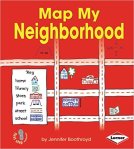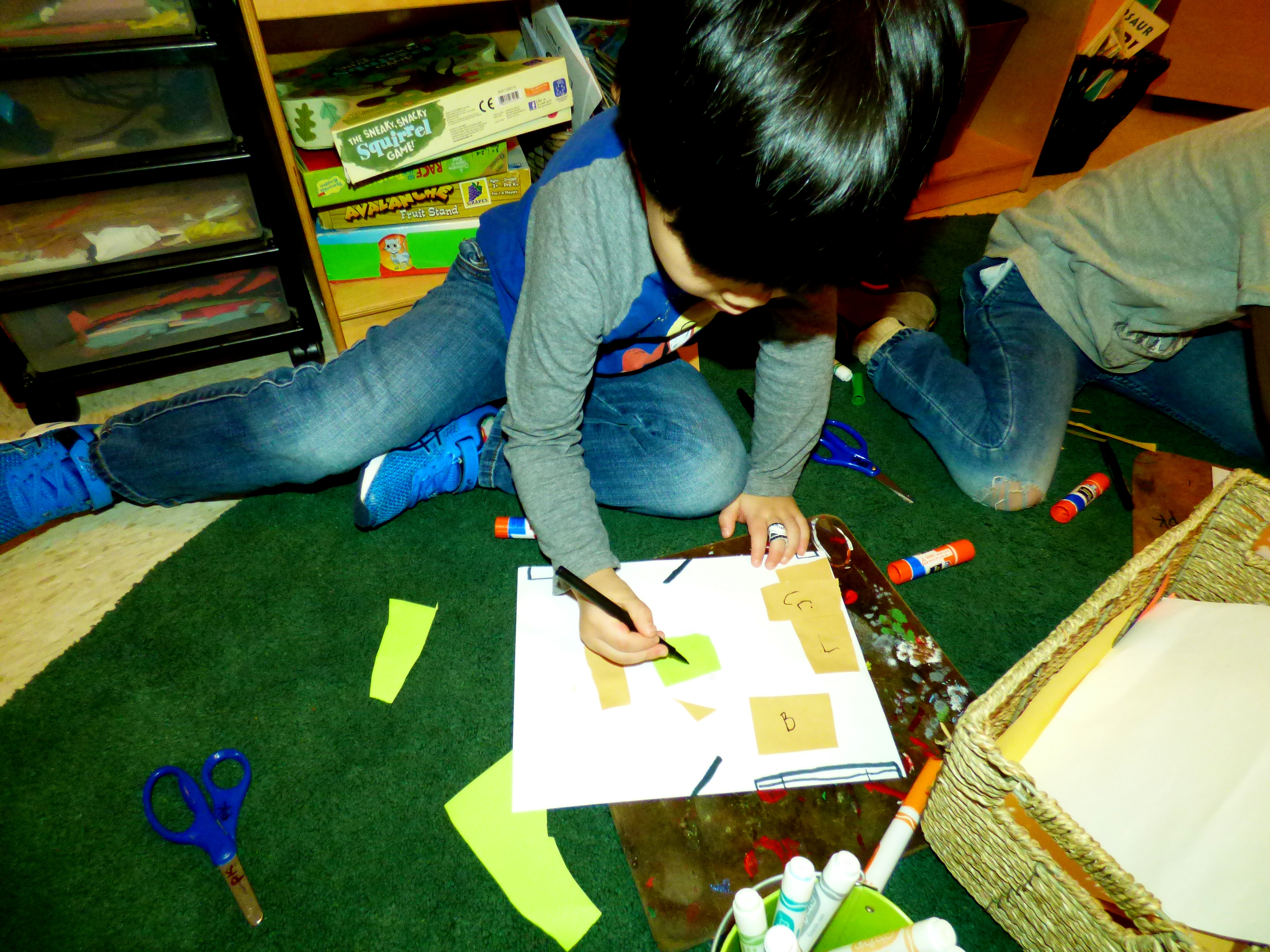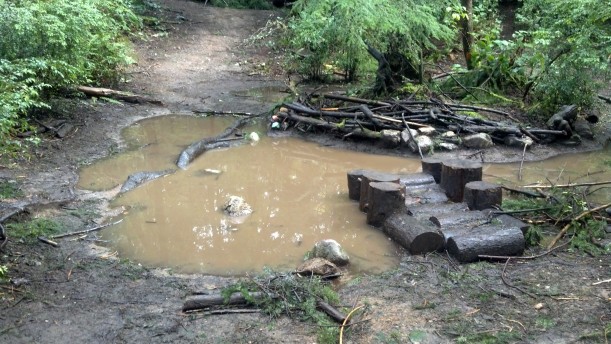Our car is coming along. In fact today it was suggested that it should be a camper instead since we are “making” such a long trip. Since I’m pretty sure I won’t be able to stay awake for the whole drive to Florida, I thought it would be good to train some fellow navigators. This atlas we’ve been looking over is way too complicated. We decided to start with something a bit simpler.

We began with Map My Neighboorhood by Jennifer Boothroyd. In this book, we learn how to draw our own maps. We begin with a list of the places we would like to include and work from there.
Our first attempt was made out on the Northbound Trail. The children used a large notebook, scissors, paper scraps, and glue sticks to create the areas they felt were important. This map was made together.
The most difficult parts were deciding what to include and choosing a size for each piece. Scale might be a bit beyond us at this point, but the practice with position in space was valuable.
Our next mapmaking enterprise took place in the classroom. Each child created their own map. I set up the paper first with the locations of the doors and windows marked. When placing the paper in front of the children, I made sure that their paper was oriented so that the doors and windows were aligned with the room. The children had many different takes on what was important to include on their classroom map. None of you will be surprised to hear that the loft was almost always the first furniture added.






